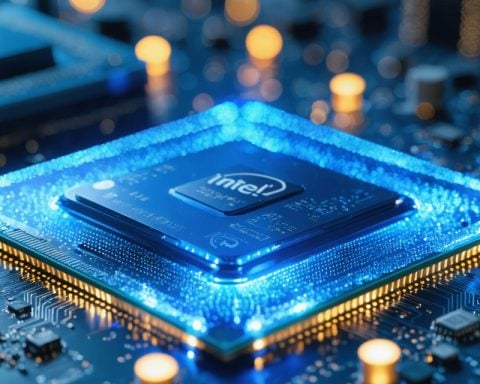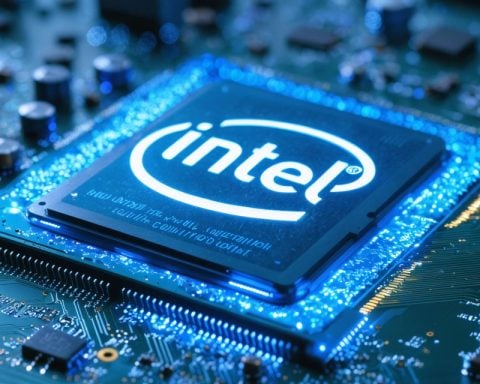The AI landscape is witnessing unprecedented transformation, with companies seeking to harness technology for growth across various sectors. A recent analysis highlights that investments in artificial intelligence have surged dramatically, particularly in complex areas like data processing and algorithmic generation. Generative AI, in particular, is reshaping traditional business models in marketing and customer relations.
Predictions indicate that AI could infuse billions into the global economy, with reports estimating a potential contribution of up to $13 trillion by 2030. Investment firms such as Goldman Sachs project a significant uptick in global GDP, directly related to advancements in AI, underscoring the technology’s potential to enhance productivity effectively.
In this evolving scenario, NVIDIA Corporation (NASDAQ: NVDA) is making notable strides. The company is enhancing its offerings through a collaboration with an AI firm in the UAE, focusing on climate technology and global weather forecasting accuracy. This initiative reflects the increasing integration of AI into real-world applications.
Sector firms, particularly those classified as AI high performers, are setting aside substantial resources—over 20% of their digital budgets—specifically for AI technologies, aiming not only to optimize expenses but also to explore new revenue opportunities.
As interest in AI surges, NVIDIA’s advancements position it well within this competitive environment, leading experts to speculate on its future as a major player in the AI market. The spotlight on Apple’s AI developments, paired with investments in supercomputing infrastructure, marks a pivotal moment in the industry.
NVIDIA’s Role in AI Expansion: Additional Insights
NVIDIA is at the forefront of the AI revolution, not just through its hardware capabilities but also through strategic partnerships and innovative software solutions. The company’s Graphics Processing Units (GPUs) have become essential for deep learning and neural network training, which are fundamental to the development of advanced AI applications. Additionally, NVIDIA’s CUDA programming model allows developers to leverage parallel computing power, further enhancing AI capabilities.
Key Questions and Answers
1. What specific technologies has NVIDIA developed for AI?
NVIDIA has developed several key technologies that drive AI advancements, including the Tensor Core architecture in their GPUs, which accelerates machine learning workloads, and the NVIDIA Deep Learning SDK. They also lead in providing frameworks like TensorRT for optimized inference in AI applications.
2. How is NVIDIA supporting AI in various industries?
NVIDIA provides tailored solutions across various sectors, such as healthcare for medical imaging, automotive for autonomous driving, and finance for algorithmic trading. Their platforms facilitate faster data processing and predictive analytics, empowering businesses to innovate and improve efficiency.
3. What are some of the challenges NVIDIA faces in the AI market?
Key challenges include competition from other tech giants like AMD and Google, which are also developing AI-capable hardware. Additionally, issues related to supply chain constraints and ethical considerations in AI usage pose significant hurdles for NVIDIA’s growth and public perception.
Advantages and Disadvantages of NVIDIA’s Role in AI
Advantages:
– Market Leadership: NVIDIA is a recognized leader in the AI hardware market, which positions it for significant growth as AI adoption increases.
– Innovation: Constantly pushing boundaries in GPU technology enables NVIDIA to deliver solutions that cater to the evolving needs of various industries.
– Partnerships: Strategic collaborations with AI researchers and companies facilitate advancements and practical applications of AI technologies.
Disadvantages:
– High Competition: The rapidly growing AI market is attracting numerous players, making it challenging for NVIDIA to maintain its competitive edge.
– Regulatory Scrutiny: Growing concerns over AI ethics and data privacy could lead to stricter regulations, impacting NVIDIA’s operational strategies.
– Dependency on GPU Sales: A significant portion of NVIDA’s revenue is derived from GPU sales, which could be adversely affected if trends shift towards alternative computing architectures.
Conclusion
As NVIDIA continues to leverage its technological prowess and strategic partnerships, its role in the AI expansion remains critical. However, staying ahead in this competitive environment will require constant innovation and adaptability to changing market dynamics.
For more information on NVIDIA and its contributions to AI, visit NVIDIA. For news and insights related to artificial intelligence advancements, check AI.org.



















